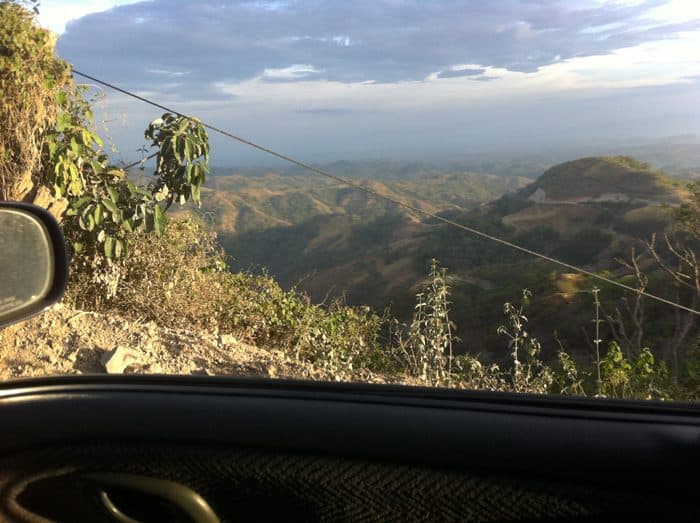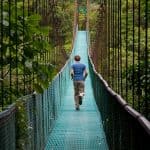TO get your finger on the pulse of the rain forest, you must go at night. It is then that chirping insects create a primitive rhythm, snakes and tarantulas come out of their hiding spots, and sloths move through the tree branches in the darkness above.

Last August, I took a two-hour guided night tour through the Children’s Eternal Rain Forest in the mountainous region of Monteverde, in north-central Costa Rica. Because of the cloud forests and wildlife diversity, and the nearby Monteverde and Santa Elena cloud forest preserves, the area attracts biologists and nature lovers from all over the world.
Many spend their lives working to understand and preserve these precious forests, home to an incredible variety of life forms, including thousands of plant species and hundreds of bird species. CONSERVATION is the key to ensuring the future of these forests, and the Children’s Eternal Rain Forest is one example of the creative means people have used to preserve the land.
The conservation efforts behind the forest are as unique as the wildlife that inhabits it. In 1987, a group of Swedish students, who were learning about rain forests in class, decided they wanted to make an effort to help save them.
So they started a fundraising effort that helped buy the first sections of the Children’s Eternal Rain Forest. Today, children and adults from 44 countries help support and fund more than 50,000 acres of pristine land that is critical habitat for the resplendent quetzal, the bare-necked umbrella bird, Baird’s tapir, and numerous other animals.
The land is administered by the Monteverde Conservation League, a private nonprofit organization involved in protection, education, reforestation, and research activities in and around the Children’s Eternal Rain Forest.
ON that August night, the members of our group rode in a van over the bumpy dirt roads above the village of Santa Elena to the Children’s Eternal Rain Forest. We met our guide in the parking lot, at the head of the trail, as the last light of day faded in the sky. After a quick introduction, we were handed flashlights and were off to discover what lived in the land so many children had helped save.
As the 10 of us walked underneath the forest canopy, the sight of flashlights shooting in different directions into the trees seemed naive and clumsy. But the group was filled with optimism that we would seat least a few creatures come out of hiding.
And luckily, we did. One of the first animals we came across was among the strangest-looking creatures I had ever seen. Clinging to the branch of a large tree was a sloth. Shaggy, hairy, furry – these adjectives do no justice in describing the primitive creature.
It looked more like a miniature Bigfoot, clinging to the tops of the trees.
It was a two-toed sloth, one of two species living in Costa Rica – the other is the brown-throated three-toed sloth – and five species worldwide. This sloth was hanging upside down on a branch with its head pointed toward the crowd, though at first it was difficult to tell its head from its bottom.
To say that seeing a sloth is exhilarating seems a paradox. Sloths are terribly ugly and are known for their painfully slow movements.
But I have to admit, it was no less exciting than the time I saw a mother grizzly bear teaching her two cubs to forage for food in Yellowstone National Park, in the United States.
AFTER 15 minutes, during which we saw the animal descend to about 20-30 feet above the ground, our group moved on in search of more nocturnal animals. Although there would be a few more –mainly sleeping birds – in the trees, we did not find another like the sloth. At one point the guide found a hole in the ground, which he said was the home of tarantula.
But he pointed out, it looked like the spider had been scared off by the noise and light. He tried to draw it out using a small twig as bait, but the tarantula was unfazed and stayed deep in its hole. One reptile we did see was a pit viper, an extremely venomous snake, according to our guide.
On two separate occasions, we saw one in the trees perched directly above the edge of trail. It looked like allow-grade, light-green garden hose that had been recklessly tossed into the trees above. Pit vipers are very dangerous, our guide explained, and their bites can resulting serious injury or death.
Unfazed by the potential danger, we raised our flashlights and cameras toward the languid creature, digitally capturing the still snake in the darkness of the forest.







